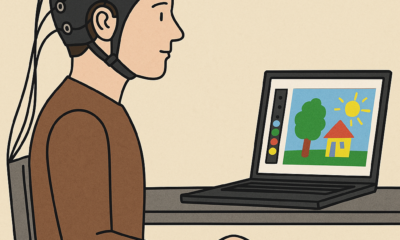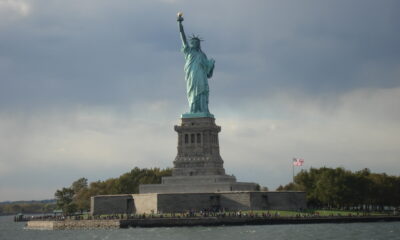Executive
Lessons from Philadelphia’s Welcome Park Controversy
Restore Welcome Park to status quo ante the leveling for the Bicentennial and relocate William Penn to another park, says a local resident.

This month, Americans heard more about Welcome Park in Philadelphia than they had in the entire span of its existence.
Welcome Park is a small, ugly heat sink in Old City, located near Independence Mall and many historical sites. At some point, it was the site of William Penn’s home, though it now resembles the decrepit atrium of a 1970s government building. Until this past week, its most interesting distinction was that at some point, the National Park Service decided to make it even less attractive by removing the trees and benches.
Most Philadelphians would undoubtedly struggle to locate it, name it, or care about it. In a city of substandard parks, Welcome Park lowers the bar even further.
Recently, staffers at the National Park Service decided that maybe having a blighted park built with pavers that many Philadelphians would be ashamed to put in their backyards wasn’t the best idea as the city looks forward to entertaining visitors for America’s 250th birthday in 2026.
The Park Service employees did not anticipate the bear trap that they were about to step into by issuing an RFP for the property that included removing the William Penn statue that stands in the middle of the park. A controversy erupted over this latest episode in America’s statue wars.
It’s a dumb controversy perpetuated by bad-faith actors.
But rethinking the national parks in Philadelphia is a more worthwhile subject as we approach our country’s 250th birthday – especially in light of the destruction wrought on this area by preparations for the country’s 200th birthday.
Independence Mall was conceived from some of the early seeds of urban renewal, which designated urban areas – often those occupied by minorities – as blighted or undesirable. Many mid-century parks, government buildings, and highways resulted from urban renewal.
As a result, land in our cities is underutilized and often government-owned. That should trouble traditional conservatives as well as city dwellers who have to cross urban dead zones and overbuilt highway infrastructure. The government clear-cut whole neighborhoods of homes and businesses and replaced them with economically marginal and generally uninteresting sites.
Take Independence Mall. If you Google it, you’ll see a series of pictures that illustrate its failure. Its most prominent feature is that no people are seen in it. The space is now mostly empty grass, where once were three blocks of homes and businesses in the middle of the city.
Welcome Park has a similar history. For many decades, the lot was the home of the Philadelphia Chamber of Commerce, then the Keystone Telephone Company, and later the Bell Telephone Company. In 1961, with urban renewal in full swing, the ornate building that housed these businesses was abandoned. Many of the structures on the site would have been worthy of historic recognition and maintenance.
If the National Park Service wants to change the park and recognize its historic significance, it should do so by reverting it to its more useful and historically accurate state – not a poorly visited parking lot, but a business.
The Park Service should reissue the RFP and offer development rights to rebuild the site using historic plans. Put land back on the property-tax rolls and put it to use reflecting the lot’s history. And do the same for the rest of Independence Mall. The tangle of state and federal laws and land transfers that made the Mall possible would be challenging to unwind, but the opportunity to rebuild a historic area of the city is worth the effort.
Heading into 2026, Philadelphia should make a concerted effort to rebuild the homes and businesses leveled to create Independence Mall in 1976 – a mistake that should be undone.
Visitors who seek a historic experience in Philadelphia deserve to get it. They should see the factories of the mid-1800s, with the interiors repurposed into lofts or offices. They should see row homes quilted together with explanations of their architecture, design, and use. We should induce the private sector to make it happen by granting developers ownership of the properties after historical redevelopment – with stipulations that they provide tourist and visitor access. They could also partner with the Philadelphia Housing Authority to add affordable housing options or require a certain percentage of affordable units.
Throughout the area, we could include educational elements, in the spirit of Freedom Trail in Boston. There would still be ample parks and green space. There are more historical parks in the immediate area. Washington Square Park is well-trafficked and well-used and ably tells the story of its history. Independence Square, immediately south of Independence Hall, dates back to 1732. Franklin Square to the north offers still more park space.
But between Independence Hall and the Constitution Center, we should rebuild the three blocks of historic structures destroyed in the name of history for the city’s last big celebration of America’s birth. And we should do it in time for 2026.
The National Park Service can even require that every historically rebuilt site include a William Penn statue – making it a win-win for everyone.
This article was originally published by RealClearPennsylvania and made available via RealClearWire.
Mark Nicastre is a crisis and advocacy communications consultant in Philadelphia, where he runs Fitler Square Strategies. Most recently, he was the Communications Director for former Gov. Tom Wolf.
-

 Guest Columns4 days ago
Guest Columns4 days agoShe Saved Her Life. 7-Eleven Fired Her
-

 Civilization4 days ago
Civilization4 days agoDemocrats’ Viral Video Lights Match to the Republic
-

 Guest Columns4 days ago
Guest Columns4 days agoWaste of the Day: What’s Big, Grey And Costs $350K?
-

 Civilization3 days ago
Civilization3 days agoThe AI Challenge: Palantir, the Pope, and Paul Kingsnorth
-

 Civilization3 days ago
Civilization3 days agoNo Kings, No Queens, No Blind Loyalty
-

 Civilization2 days ago
Civilization2 days agoThe World Needs to Restore Balance and Objectivity on Climate
-

 Executive3 days ago
Executive3 days agoWaste of the Day: California’s $450 Million 911 Center Doesn’t Work
-

 Civilization2 days ago
Civilization2 days agoFree Speech Requires a Pious Commitment












